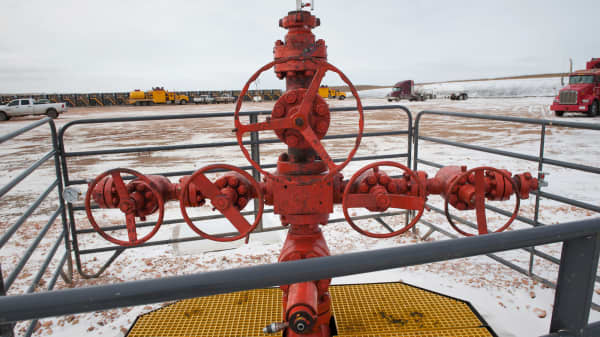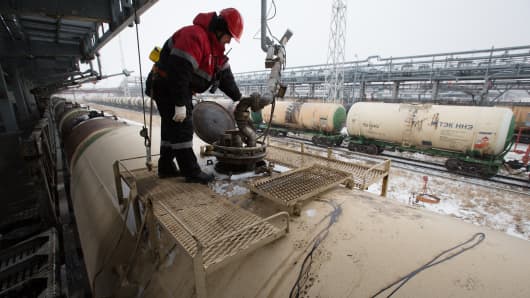But the savings enjoyed by oil consumers are coming out of the pockets of oil-producing nations that are already feeling the pinch of an epic slide in benchmark prices.
In Russia and Venezuela, falling prices have cut revenue from oil sales, hammering local currencies, stoking local inflation and crimping economic growth. Saudi Arabia, the world's biggest exporter, has also lost billions in oil revenue, but holds a substantial cushion of cash reserves to help it ride out the price drop
Rising oil supplies are also being fed by an increase in U.S. production, slack demand from a slowing global economy and long-term efficiency gains in consuming countries.
The speed of the price drop, though, has caught most of the world by surprise.
Read MoreOil price fallout: Producers struggle as GDP grows
"Businesses and consumers to a certain extent generally expect and live in an environment where things change slowly—they make plans and they have budgets prepared ahead of time," said Greg Daco, an economist at Oxford Economics. "When you have big step shift in prices, that tends to throw off plans and budgets, especially when it happens in a matter of a few months."
As the world scrambles to adjust to cheaper oil, it remains to be seen how long—or how deep—the price drop goes. In the futures market, prices have swung widely as traders place their bets on just how low crude prices are headed.
So what happens if oil prices fall to, say, $40 a barrel? To find out, economists at Oxford Economics fired up their computer models to run projections on the growth rates of 45 economies around the world.
They started with a "baseline" forecast, pegging oil prices to an average of $84 next year, a number that, until a few months ago, seemed like a reasonable forecast.
Then they looked at several ways that oil affects growth. The list included how much oil a country produces and consumes, how big of a role oil plays in overall energy demand, the impact on currency exchange rates, fuels taxes and other factors.
Read MoreThe countries slammed worst by plunging oil prices
After knocking down the price of oil in $10 increments, the country seeing the biggest boost to growth was the Philippines, which could expect its economy to grow by 7.6 percent on average over the next two years if oil falls to $40. China and India were next in line as cheap oil beneficiaries, with growth rates of 7.1 percent and 6.7 percent, respectively
The biggest loser would be Russia—which would see growth shrink by an average 2.5 percent annually over the next two years—even without factoring in a possible currency crash and the ongoing sanctions imposed against Russia by the U.S. and Europe.






